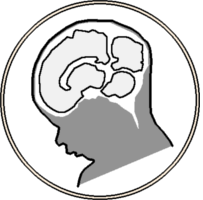The human brain is developed through complex processes of neurulation, neuronal prolifertation and migration, apoptosis, and synaptogenesis that start in sequence shorly after conception and progress rapidly before birth. The axons then myelinate and the neocortex matures in a process that completes by adulthood.

As axons grow and myelinate and synaptic connections form, the sensory and motor functions start to develop before birth. The visual and auditory functions also start to develop before birth but reach their peak of development within the first few months after birth. Functions such as receptive language and speech production follow; and higher cognitive functions develop afterwards:

The development of the human brain is a robust process that is amazingly geneticaly regulated. However, adverse events and conditions during gestation and in the perinatal period may result in alterations or abnormalities that may lead to long-term neurological morbidity or mental health conditions. Intra-uterine growth restriction (IUGR), for example, may result in neurodevelpmental delay. Very preterm birth and IUGR have been shown to increase the risk of epilepsy and autism. Perinatal stroke may result in cerebral palsy. Early diagnosis, prognosis, and analysis of these conditions, their roots and causes, and their impact on brain development can lead to improved therapeutic interventions and treatment. When applied in a timely manner, such interventions can significantly reduce the burden of disease.

Medical imaging, in particular, non-invasive imaging techniques such as fetal MRI and ultrasound, are our current best tools to screen prenatal brain development. These techniques have already played a crucial role in fostering fields such as fetal neurology. More advanced MRI techniques, such as diffusion-weighted MRI, functional MRI, MR spectroscopy, and MR angiography hold the promise and potential to dramaticaly improve our capabilities in screening and studying normal and altered brain development before birth.

The application of MRI (and advanced MRI techniques) in the fetal and early childhood periods has been extremely challenging because of uncontrolled motion. There is virtually no control on fetal motion during fetal MRI sessions. With respect to premature infants and newborns, strategies such as "feed-and-wrap" and "try-without-sedation" require additional preparation but are certainly preferrable to sedating patients. These techniques often work well for children at ages 0-6 months and >4 years, but are not very successful for ages between 6 months and 4 years old. This is exactly a period of rapid brain development in which researchers and neuroscientists attempt to correlate results of neurobehavioral tests, such as Bayley III, with neuroimaging data. Motion-robust MRI technologies that allow robust and reliable imaging of the brain structure and function in these periods are critically needed for advancing clinical and translational research in early brain development and developmental disorders. Developing such motion-robust imaging technologies and their applications is at the heart of the research conducted at IMAGINE.


